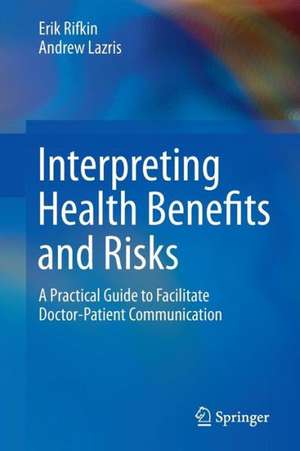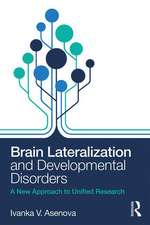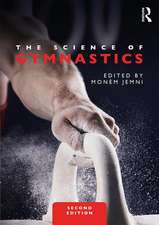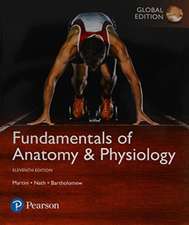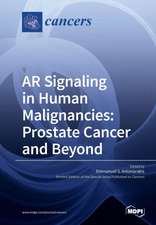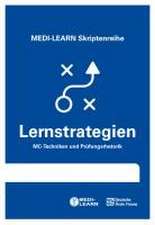Interpreting Health Benefits and Risks: A Practical Guide to Facilitate Doctor-Patient Communication
Autor Erik Rifkin, Andrew Lazrisen Limba Engleză Paperback – 17 dec 2014
Among the topics covered:
- Involving the patient in decision making.
- Towards a universal decision aid.
- BRCT: the Benefit/Risk Characterization Theater.
- Breast Cancer Screening—Mammograms.
- Prostate Cancer Screening.
- Colon cancer screening with colonoscopy.
- Screening for and treating dementia.
- Statins, cholesterol, and coronary heart disease.
This book considers several common and important situations where faulty decision-making makes overtreatment a serious risk. Clear, fair, referenced, and useful information is provided. And a powerful intuitive technique is introduced which allows patient and doctor to talk as equals as they work together in the exam room. The authorsemphasize that some patients who have been fully educated will still accept high risks of harm for a small chance of avoiding premature death. But as this book is accepted and its ideas and technique are extended, I feel sure that net harm to patients will be curtailed. And what is more, the integrity of the decision-making process will be improved.
—Thomas Finucane, MD, Professor of Medicine, Division of Gerontology and Geriatric Medicine, The Johns Hopkins University School of Medicine
Preț: 650.60 lei
Preț vechi: 684.84 lei
-5% Nou
Puncte Express: 976
Preț estimativ în valută:
124.51€ • 135.20$ • 104.59£
124.51€ • 135.20$ • 104.59£
Carte tipărită la comandă
Livrare economică 22 aprilie-06 mai
Preluare comenzi: 021 569.72.76
Specificații
ISBN-13: 9783319115436
ISBN-10: 331911543X
Pagini: 236
Ilustrații: XX, 236 p. 50 illus.
Dimensiuni: 155 x 235 x 17 mm
Greutate: 0.37 kg
Ediția:2015
Editura: Springer International Publishing
Colecția Springer
Locul publicării:Cham, Switzerland
ISBN-10: 331911543X
Pagini: 236
Ilustrații: XX, 236 p. 50 illus.
Dimensiuni: 155 x 235 x 17 mm
Greutate: 0.37 kg
Ediția:2015
Editura: Springer International Publishing
Colecția Springer
Locul publicării:Cham, Switzerland
Public țintă
Professional/practitionerCuprins
Part I: Setting the Stage.- Shared Decision Making (SDM).- Decision Aids.- Towards a Universal Decision Aid.- Involving the Patient in Decision Making.- BRCTs.- Part II: Case Studies – Health Benefits and Risks.- Breast Cancer Screening: Mammograms.- Colon Cancer Screening with Colonoscopy.- Prostate Cancer Screening.- Screening for Lung Cancer with Spiral CT.- Health Effects of Smoking.- Exercise Stress Tests.- The Use of Warfarin in Atrial Fibrillation.- Aspirin for Prevention of Heart Disease and Stroke.- Screening for Carotid Disease in Asymptomatic Patients.- Cholesterol Screening.- Statins, Cholesterol and Coronary Heart Disease.- Annual Exam.- Screening for and Treating Dementia.- Osteoporosis: Bone Density Testing and Drug Treatment.- Osteoporosis: Calcium and Vitamin D.- Estrogen Replacement Therapy.- Vitamins and Supplements.- MRI and Back Pain.- Antibiotics in Sinusitis and Bronchitis.- Final Thoughts.
Recenzii
“This book offers a visual tool to empower and help the patient think about why decisions are being made with respect to various screenings, tests, or interventions. … I think that this model could be considered as we train our students, residents, and fellows. … The visual chart provides another means to empower the patient (and the patient’s family) in patient-centered care.” (Stella King, Family Medicine, Vol. 50 (2), February, 2018)
“This book is dedicated to explaining the risks of illness or therapeutic interventions and the associated benefits of interventions. … Clinicians of all levels can use this book to understand risks and benefits and then to employ the models to help patients understand the concepts. … This is a uniquely exceptional book on communication between patients and medical personnel. … This is an outstanding book for every academic and teaching institution.” (Vincent F. Carr, Doody's Book Reviews, April, 2015)
“This book is dedicated to explaining the risks of illness or therapeutic interventions and the associated benefits of interventions. … Clinicians of all levels can use this book to understand risks and benefits and then to employ the models to help patients understand the concepts. … This is a uniquely exceptional book on communication between patients and medical personnel. … This is an outstanding book for every academic and teaching institution.” (Vincent F. Carr, Doody's Book Reviews, April, 2015)
Notă biografică
Erik Rifkin is the president of an environmental consulting firm that specializes in the characterization of ecological and human health risks from exposure to soil, water, air and sediments. His firm provides assistance and guidance to federal and state regulatory agencies and corporations regarding the nature and magnitude of environmental risks and potential remediation strategies. Dr. Rifkin's broad experience includes the communication of health risks and benefits to groups concerned with these issues.
Textul de pe ultima copertă
This timely guide to communication in patient-centered medicine argues for greater clarity in explaining health risks versus benefits of an array of screening tests, procedures, and drug regimens. It reviews the growing trend toward patients' involvement in their own care, particularly in terms of chronic conditions, and details approaches physicians can use to prepare patients (and themselves) for collaborative decision-making based on informed choices and meaningful knowledge. Chapters apply this lens to a wide range of common interventions as contentious as estrogen replacement therapy and antibiotics, and as widely prescribed as the daily aspirin and the annual physical. With this goal in mind, the authors also introduce an innovative decision-making tool that translates risks and benefits into a clear graphic format for fewer chances of miscommunication or misunderstanding.
Among the topics covered:
· Involving the patient in decision making.
· BRCT: the Benefit/Risk Characterization Theater.
· Breast Cancer Screening—Mammograms.
· Prostate Cancer Screening.
· Statins, cholesterol, and coronary heart disease.
Physicians in family and internal medicine will find Interpreting Health Benefits and Risks: A Practical Guide to Facilitate Doctor- Patient Communication a valuable resource for communicating with patients and new possibilities for working toward their better health and health education.
This book considers several common and important situations where faulty decision-making makes overtreatment a serious risk. Clear, fair, referenced, and useful information is provided. And a powerful intuitive technique is introduced which allows patient and doctor to talk as equals as they work together in the exam room.
As this book is accepted and its ideas and technique are extended, I feel sure that net harm to patients will be curtailed. And what is more, the integrity of the decision-making process will be improved.
—Thomas Finucane, MD, Professor of Medicine, The Johns Hopkins University School of Medicine
Among the topics covered:
· Involving the patient in decision making.
· BRCT: the Benefit/Risk Characterization Theater.
· Breast Cancer Screening—Mammograms.
· Prostate Cancer Screening.
· Statins, cholesterol, and coronary heart disease.
Physicians in family and internal medicine will find Interpreting Health Benefits and Risks: A Practical Guide to Facilitate Doctor- Patient Communication a valuable resource for communicating with patients and new possibilities for working toward their better health and health education.
This book considers several common and important situations where faulty decision-making makes overtreatment a serious risk. Clear, fair, referenced, and useful information is provided. And a powerful intuitive technique is introduced which allows patient and doctor to talk as equals as they work together in the exam room.
As this book is accepted and its ideas and technique are extended, I feel sure that net harm to patients will be curtailed. And what is more, the integrity of the decision-making process will be improved.
—Thomas Finucane, MD, Professor of Medicine, The Johns Hopkins University School of Medicine
Caracteristici
Provides physicians with an innovative tool designed to facilitate doctor/patient communication: the Risk Characterization Theater Includes tables and charts designed to compare absolute risks from day-to-day activities (e.g., driving, SCUBA diving) to absolute risks and benefits from medical intervention Adds an important and unique dimension to existing efforts to increase meaningful patient-centered care Includes supplementary material: sn.pub/extras
